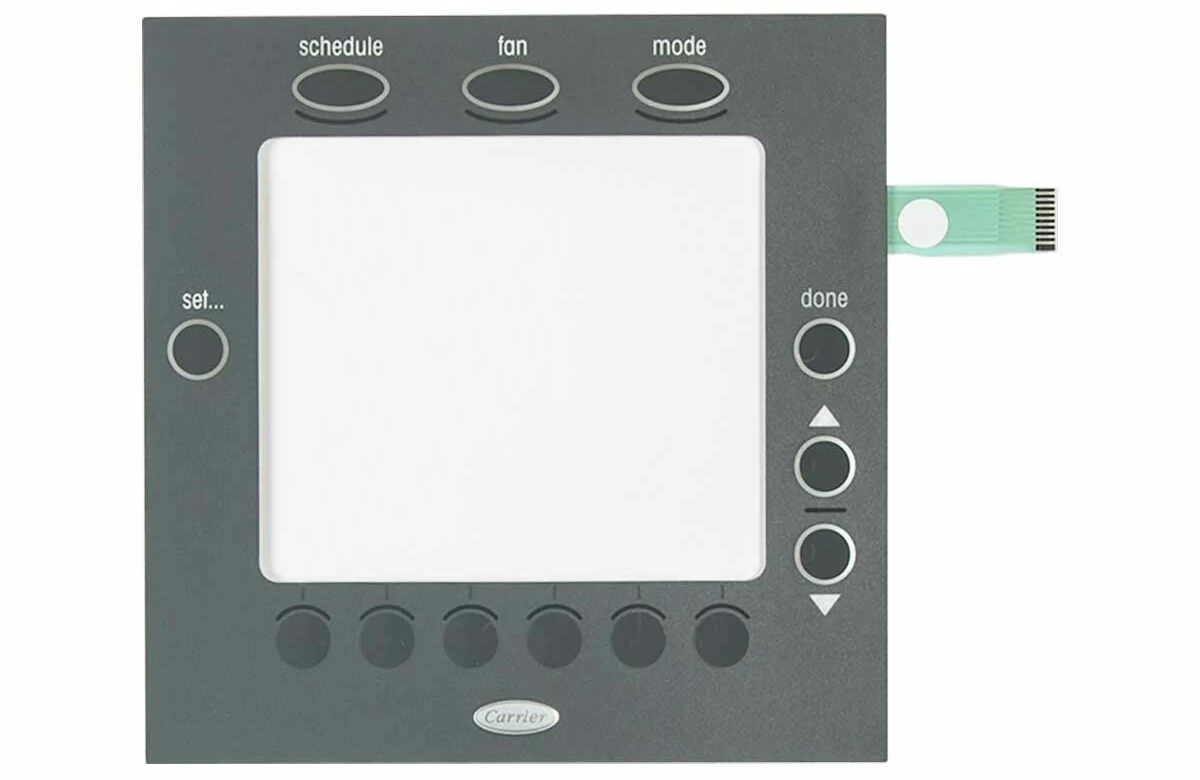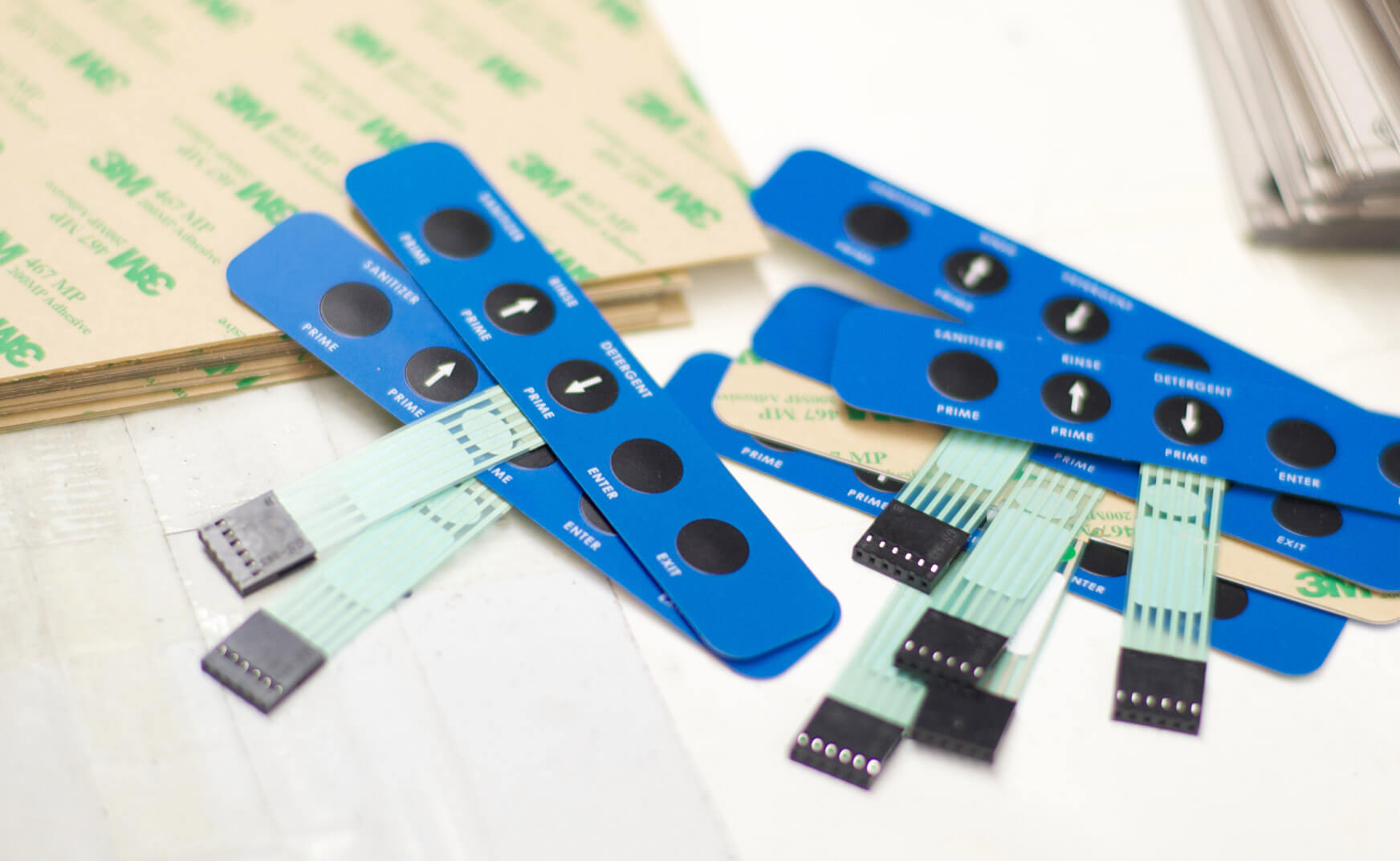Membrane Switches Explained: A Comprehensive Guide to Their Benefits
Membrane layer switches represent a functional and innovative solution for creating interface throughout a selection of fields. Their multilayered design not only guarantees performance via simple pressure but also provides considerable advantages, such as toughness and modification. As sectors significantly seek efficient and dependable control user interfaces, understanding the particular benefits and applications of membrane switches becomes important. However, the complexities of their design and implementation present one-of-a-kind obstacles that quality more detailed exam. What elements should be considered to totally utilize their possibility in contemporary applications?
What Are Membrane Buttons?

When stress is put on the membrane button, the layers make call, completing an electrical circuit. This basic device allows for a broad variety of applications, from customer electronic devices to industrial machinery. Membrane layer switches are typically made to be waterproof and resistant to dust and impurities, making them ideal for environments where resilience is necessary.
In addition, the adaptability of the materials used in membrane switches facilitates innovative designs that can satisfy different shapes and dimensions. This versatility adds to their popularity in diverse fields, including medical devices, automotive controls, and home appliances. Overall, membrane switches over stand for a crucial component in contemporary individual interface technology, linking the void in between individuals and electronic systems.
Secret Benefits of Membrane Switches
Amongst the myriad of user interface options available, membrane switches stand out for their unique mix of benefits. One of the primary advantages is their portable and light-weight design, which enables integration right into a broad array of tools without adding significant mass. This is especially beneficial in applications where space is restricted.
Furthermore, membrane layer switches over offer resilience and resistance to ecological aspects. They are usually constructed with products that can endure moisture, dirt, and various chemicals, making them ideal for severe problems. This toughness adds to a much longer life expectancy contrasted to standard mechanical buttons.
One more substantial benefit is the versatility in modification. Membrane buttons can be printed with numerous graphics, colors, and structures, allowing for customized designs that satisfy specific branding or practical needs. This flexibility encompasses the number of layers and circuit choices, giving engineers with numerous configurations.
Additionally, the responsive feedback given by some membrane layer changes boosts individual experience, making them more user-friendly to run. The convenience of cleaning and maintenance even more strengthens membrane layer buttons as a sensible choice in both consumer and industrial applications. Generally, these vital benefits make them a recommended solution for numerous designers and makers
Applications in Different Industries
Just how do membrane buttons locate their place across diverse industries? Their flexibility and performance make them essential elements in markets ranging from health care to consumer electronics. In medical devices, membrane buttons are made use of for their convenience of cleansing and resistance to contamination, making certain health in settings where sterility is critical.
In the customer electronic devices market, these switches offer smooth, user-friendly interfaces that enhance item aesthetics while maintaining durability versus damage. Automotive applications take advantage of membrane switches too, where they are utilized in dashboards and control panels, supplying trusted efficiency in difficult conditions.
In addition, industrial machinery uses membrane layer switches for control board because of their toughness, ability to endure rough atmospheres, and customizable styles that satisfy particular functional requirements. The food industry leverages membrane layer switches for their ease of use and resistance to spills, ensuring functional effectiveness in fast-paced setups.
Eventually, the flexibility of membrane changes throughout these diverse applications underscores their essential function in modern innovation, enhancing individual interaction while satisfying industry-specific requirements. Their continued advancement guarantees more combination into arising fields and cutting-edge products.
Style and Customization Choices
The layout and customization choices readily available for membrane buttons are crucial for tailoring user interfaces to fulfill particular individual demands and aesthetic preferences. These buttons can be made in various shapes, dimensions, and layouts, enabling seamless combination right into diverse applications. The flexibility in style suggests that manufacturers can create special user interfaces that boost usability and maintain brand identity.
Custom-made colors, graphics, and structures can be put on you could check here the surface of the membrane switch, providing a chance for branding and user involvement. Additionally, backlighting options, such as LED lighting, can be incorporated to improve exposure in low-light problems, therefore boosting functionality.
Practical aspects can additionally be personalized, including responsive comments and actuation pressure, which can be gotten used to fit various user interactions. The choice of materials, such as polyester or polycarbonate, permits for variations in sturdiness and environmental resistance, accommodating the certain demands of various industries.
Ultimately, the extensive layout and modification abilities of membrane layer switches enable business to produce visually attractive and user-friendly interfaces, ensuring that their items satisfy both visual and functional needs properly. Membrane Switches.
Considerations for Execution
Carrying out membrane layer switches calls for cautious consideration of different factors to make certain ideal functionality and customer experience. One of the key factors to consider is the designated application atmosphere. Factors such as direct exposure to dampness, extreme temperature levels, and chemical compounds can dramatically affect the button's efficiency and durability. Selecting products that hold up against these problems is critical.

Another important aspect view it is the switch's design and format. Ensuring that the responsive feedback and actuation force align with customer assumptions improves functionality. Performing user testing can offer valuable insights into the ideal style.
Furthermore, compatibility with digital elements must be examined. The button's circuitry need to line up with the total system style, making sure reputable signal transmission and minimizing disturbance.
Moreover, manufacturing techniques and costs should be assessed. The choice in between custom styles and standard versions can affect both budget plan and lead time.
Finally, take into consideration upkeep and repair work. Membrane buttons might click for more info need particular cleaning and treatment treatments to maintain their appearance and functionality over time. By addressing these factors to consider, organizations can carry out membrane buttons that meet their functional needs while providing a positive individual experience.

Verdict
To conclude, membrane layer switches stand for a versatile and resilient control interface appropriate for a wide variety of applications throughout several industries. Their small layout, resistance to ecological factors, and adjustable functions enhance user experience while conference specific branding requirements. As modern technology continues to progress, the importance of membrane buttons in modern-day devices continues to be considerable, providing both performance and aesthetic allure. Future developments will likely additionally broaden their applications and performance in various settings.
Membrane layer changes stand for a flexible and innovative solution for developing individual interfaces across a variety of industries.Understanding the fundamental elements of modern-day digital user interfaces, membrane layer buttons are a type of user interface tool that are composed of flexible, slim layers of product. In general, membrane switches stand for a crucial element in contemporary user interface technology, connecting the space in between users and digital systems.
Among the myriad of customer interface choices available, membrane layer switches stand out for their distinct mix of benefits.The style and modification options available for membrane buttons are critical for customizing interfaces to meet particular individual needs and aesthetic preferences.